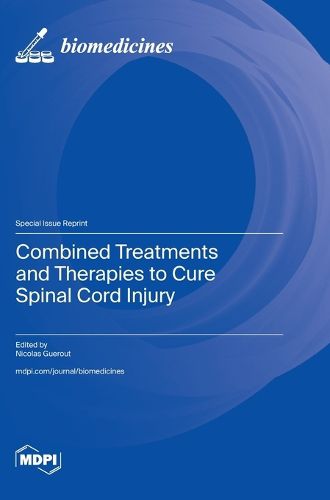Readings Newsletter
Become a Readings Member to make your shopping experience even easier.
Sign in or sign up for free!
You’re not far away from qualifying for FREE standard shipping within Australia
You’ve qualified for FREE standard shipping within Australia
The cart is loading…






This title is printed to order. This book may have been self-published. If so, we cannot guarantee the quality of the content. In the main most books will have gone through the editing process however some may not. We therefore suggest that you be aware of this before ordering this book. If in doubt check either the author or publisher’s details as we are unable to accept any returns unless they are faulty. Please contact us if you have any questions.
Spinal cord injuries (SCIs) continue to be devastating conditions, often resulting in irreversible motor, sensory, and sphincter deficits in humans, with no effective treatment currently available. Common causes include road accidents and falls. Despite their reputation as incurable, considerable research efforts have focused on developing treatments with the aim of at least partially restoring lost functions. Alongside these therapeutic pursuits, significant progress has been made in understanding the mechanisms that occur after SCIs. Although some scientific debate persists, there is growing clarity about the events leading to spinal scar formation and cell populations involved. This foundational knowledge has spurred the development of several therapeutic approaches, tested over the past decades, including peripheral nerve grafts, enzyme use, and antibodies. While these methods have shown promising results in animal models, they have proven challenging to implement in humans, largely failing to demonstrate efficacy in clinical trials. Recent advances in the use of transgenic mouse models, omics technologies, and optogenetics have significantly improved our understanding of cell diversity within both injured and uninjured spinal cords, as well as their connections to the brain, leading to an emphasis on strategies involving cell transplantation, neuromodulation, and physiotherapy. The Special Issue was conceived within this context. It comprises six research articles and five literature reviews, all dedicated to exploring advancements in cell transplantation, neuromodulation, and physiotherapy techniques.
$9.00 standard shipping within Australia
FREE standard shipping within Australia for orders over $100.00
Express & International shipping calculated at checkout
This title is printed to order. This book may have been self-published. If so, we cannot guarantee the quality of the content. In the main most books will have gone through the editing process however some may not. We therefore suggest that you be aware of this before ordering this book. If in doubt check either the author or publisher’s details as we are unable to accept any returns unless they are faulty. Please contact us if you have any questions.
Spinal cord injuries (SCIs) continue to be devastating conditions, often resulting in irreversible motor, sensory, and sphincter deficits in humans, with no effective treatment currently available. Common causes include road accidents and falls. Despite their reputation as incurable, considerable research efforts have focused on developing treatments with the aim of at least partially restoring lost functions. Alongside these therapeutic pursuits, significant progress has been made in understanding the mechanisms that occur after SCIs. Although some scientific debate persists, there is growing clarity about the events leading to spinal scar formation and cell populations involved. This foundational knowledge has spurred the development of several therapeutic approaches, tested over the past decades, including peripheral nerve grafts, enzyme use, and antibodies. While these methods have shown promising results in animal models, they have proven challenging to implement in humans, largely failing to demonstrate efficacy in clinical trials. Recent advances in the use of transgenic mouse models, omics technologies, and optogenetics have significantly improved our understanding of cell diversity within both injured and uninjured spinal cords, as well as their connections to the brain, leading to an emphasis on strategies involving cell transplantation, neuromodulation, and physiotherapy. The Special Issue was conceived within this context. It comprises six research articles and five literature reviews, all dedicated to exploring advancements in cell transplantation, neuromodulation, and physiotherapy techniques.